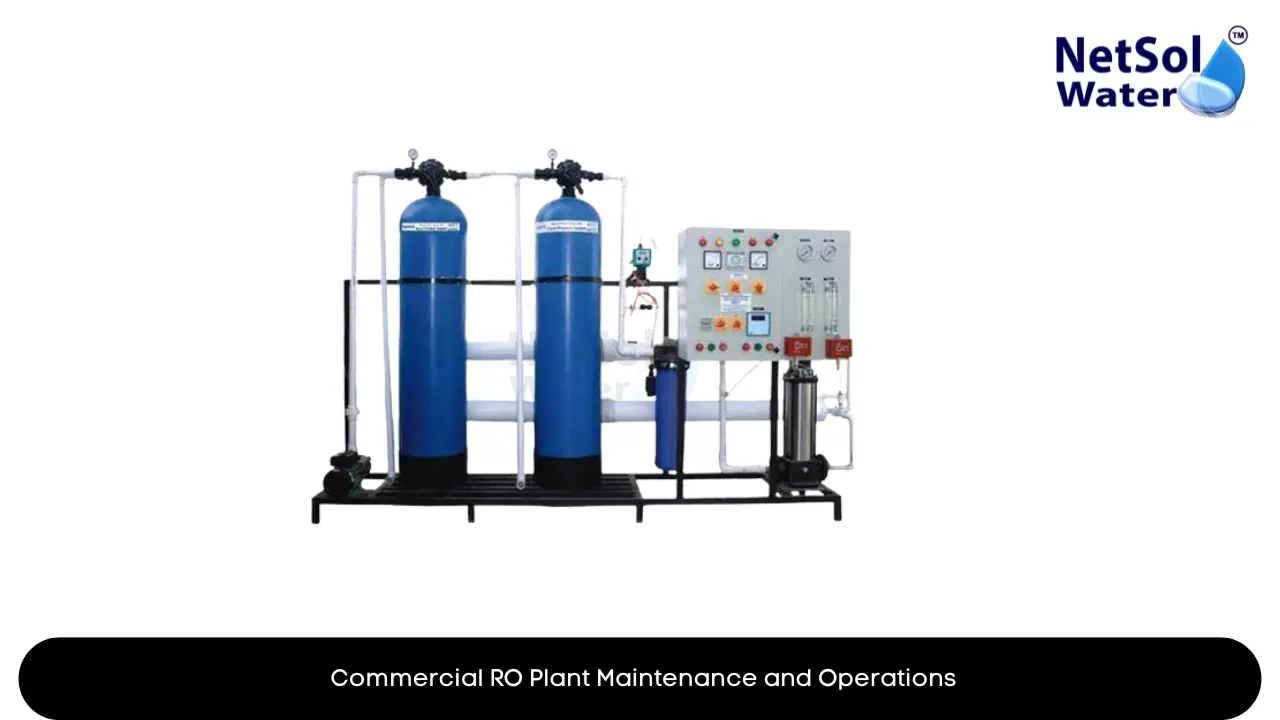Commercial RO Plant Maintenance and Operations
In regions facing freshwater scarcity, seawater or brackish water reverse osmosis (RO) desalination plants provide a vital source of new municipal and industrial supply. However, these facilities also represent significant capital investments requiring diligent maintenance and operational care to deliver consistent performance over their multi-decade lifespans. From pre-treatment and membrane monitoring to energy management and concentrate disposal, effective RO plant operations draw upon extensive expertise to overcome unique challenges.
Let's explores key maintenance and operational considerations for commercial-scale RO desalination systems.
Pre-Treatment Management
Assuring high feedwater quality reaching RO membranes is crucial for minimizing fouling, scaling, and degradation that can severely compromise system productivity. As such, pre-treatment represents one of the most important and costly aspects of plant operations deserving focused maintenance effort.
Screening/Clarifying: Periodic inspections of intake screens and replacement of filter media in clarifiers prevents debris accumulation that could damage downstream equipment and membranes. Budgeting for periodic filter acid washes is also advisable.
Scale Inhibitors: Antiscalant chemicals like phosphonates and polymers hinder mineral salts from precipitating on membrane surfaces and brine channels. Maintaining precise dosing levels based on feedwater chemistry analysis optimizes efficacy while minimizing chemical costs.
Disinfection: Sodium hypochlorite or UV irradiation help control microbial biofouling on membranes, but excessive oxidant exposure can damage thin-film composite membranes. Continuous residual monitoring and deactivation procedures are critical.
Cartridge Filters: String-wound filters capture any remaining suspended particles in the final pre-treatment stage. Tracking differential pressures across housings determines the replacement frequency needed to prevent a breakthrough.
Membrane array integrity monitoring
RO systems achieve high salt rejection using cross-flow membrane arrays composed of thousands of individual spiral-wound element housings operating at high pressures up to 1000 psi. Maintaining membrane integrity through meticulous monitoring is vital.
Probing Tests: Special probing cart systems isolating individual pressure vessels allow operators to identify damaged or underperforming membrane elements based on low salt rejection or low flow rates. Elements get replaced as needed during maintenance shut-downs.
Normalisation: By calculating the normalised driving pressure across each array, operators can detect overall fouling, scaling, or compaction requiring system-wide cleaning measures.
Energy Recovery Maintenance
RO systems are highly energy-intensive, so plants incorporate energy recovery devices (ERDs) like turbine-generators, work exchangers, or concentrated vessels to recapture energy from the concentrated brine stream and reduce pumping power costs. Keeping these systems operating reliably is critical.
Pump Maintenance: High-pressure pumps feeding membrane arrays require rebuilding at scheduled intervals to replace wear components like shafts, bearings, and mechanical seals. Lubricant flushing and cooling also require monitoring.
ERD Reliability: Turbine blade corrosion, rotor wear, and scaling can plague poor quality feed streams entering ERDs. Vibration monitoring helps identify bearing failures that require invasive repairs.
Pressure Exchanger Maintenance: Regular opening and cleaning of ceramic pressure exchangers avoids efficiency losses from scaling on the high-pressure side.
Disposal Handling
Safely managing the hyper-saline concentrate stream continuously discharged represents another key operational aspect.
Brine Blending: Outfalls dilute brine with seawater or cooling water to reduce negative marine impacts. Modeling tools help achieve minimum dilution ratios while diffuser inspections confirm proper mixing.
Evaporation Ponds: Land-locked plants may discharge to engineered evaporation basins, requiring periodic dredging or water treatment. Brine composition analysis and lining repairs are important.
Concentrate Slurry: Adding coagulants and flocculants to RO concentrate precipitates salts out for mechanical dewatering. Centrifuge and filter press maintenance is critical, as is hauling slurry disposal.
Operations Monitoring & Control
Process automation and continuous data monitoring are essential to keep RO systems optimised.
Distributed Controls: Supervisory control and data acquisition (SCADA) systems integrate myriad PLC controls, instruments, and HVAC equipment across the entire plant into unified operation. Supporting IT infrastructure requires maintaining both hardware and software components.
Advanced Analytics: Many facilities now deploy machine learning analytics coupled with SCADA systems to diagnose abnormalities, prescribe optimized operating settings, and forecast maintenance needs based on historical operating data. Model tuning and archival management supports this capability.
Remote Monitoring: Many plants leverage industrial internet and wireless monitoring to enable remote operation oversight and enhanced support services directly with equipment vendors. These digital connectivity systems require cybersecurity vigilance.
Management Considerations
Beyond technical operations and equipment, achieving optimal RO plant performance also relies on strong business management practices:
Asset Management Planning: Developing annual budgets while forecasting major repair, overhaul, and capital replacement schedules years into the future ensures funds and resources remain available to maintain consistent plant reliability and production.
Staffing/Training: Experienced operators experienced in RO systems with knowledge of procedures, troubleshooting, and safety policies are essential to sustain performance. Structured training programs build skills.
Inventory Management: Maintaining spare parts and membrane element inventories ensures minimal downtime for repairs. Identifying lead times and optimizing stock levels balances costs.
Vendor/Contract Management: Many services like chemical delivery, solid waste removal, analytical lab work, and maintenance require external vendors. Competitive procurement alongside relationship management delivers value.
Compliance & Record-Keeping: Facilities must comprehensively document operations to demonstrate compliant performance for permitting and regulatory oversight. Lab QA/QC and auditing procedures preserve confidence in reported data.
Conclusion
The sophisticated water purification provided by commercial reverse osmosis plants relies on dedicated care across all aspects of system maintenance and operations. From feedwater pre-treatment and membrane integrity testing to energy recovery device tune-ups, concentrate management, and process automation, ensuring reliable long-term performance requires diligent oversight and planning. By carefully managing these critical details, desalination facilities can consistently deliver the high volumes of clean, potable water supply vital to industrial and community needs - even in the most water-stressed environments.
To explore customised commercial RO plants, Industrial RO plants, ETP or STP solutions for your needs in your areas and nearby regions, contact Netsol Water at:
Phone: +91-965-060-8473
Email: enquiry@netsolwater.com



